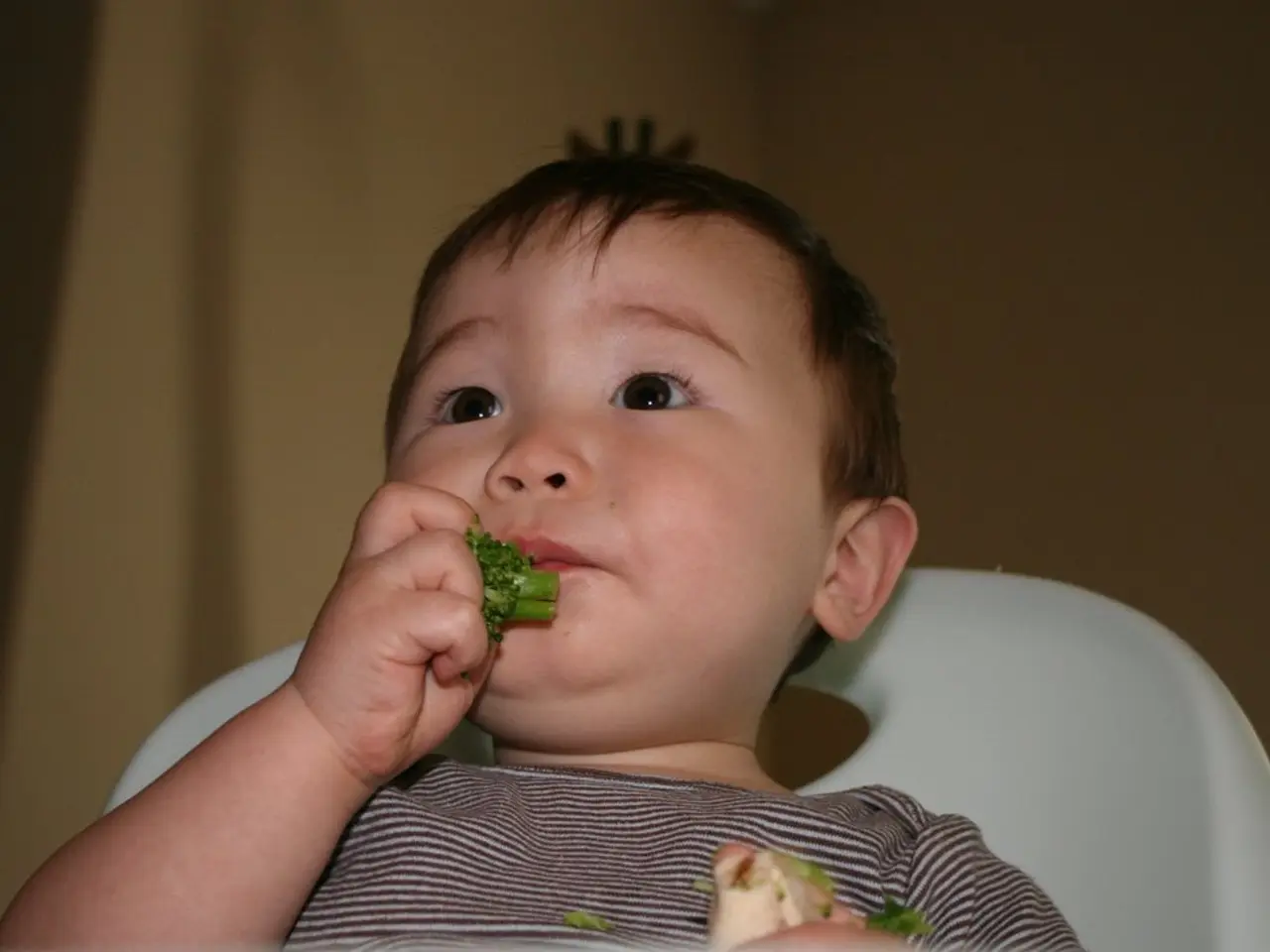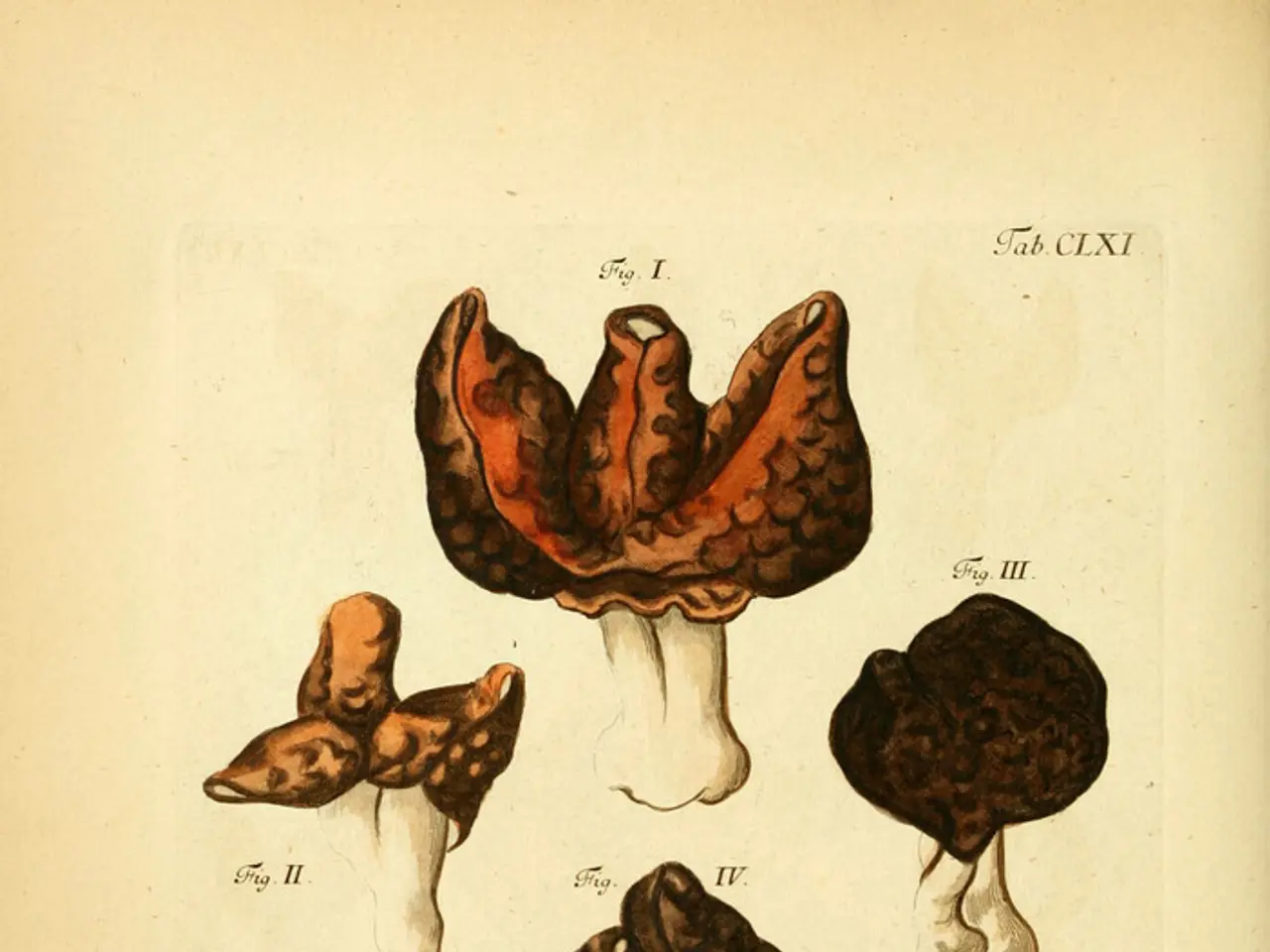Hey there! Let's talk about some popular social media platforms that kids (and adults) love: Facebook, Instagram, Pinterest, LinkedIn, and YouTube.
Talkin' 'bout my health, 'bout my health no debate
Child Gastritis: Causes, Symptoms, and Foods for Relief
If your little one's tummy's woes won't quit, it might be gastritis. Keep reading to learn all about it!
Gastrointestinal issues got you stressed? WhatsApp us at any time about speech delay, low weight, frequent illness, hyperactivity, low concentration, weak eyesight, improper sleep, pigmentation, pores, face marks, fine lines, lactation, and more!
Parent feedback
What's gastritis all about?
Gastritis happens when the mucus layer in the stomach gets irritated or inflamed, usually due to a bad bacteria infection. This mucus layer protects the stomach from acid and germs. If we boost the good bacteria in our bodies through our diet, they'll fight off the bad bacteria, viruses, and fungi, reducing gastritis[1].
Types of gastritis
There are two main types of gastritis: acute and chronic.
- Acute gastritis starts suddenly with intense stomach pain after eating spicy, oily, or contaminated foods or due to bacterial infections or injury[1]. It's self-limiting, meaning it's usually temporary and doesn't cause long-term damage.
- Chronic gastritis, on the other hand, starts with mild stomach ache that can lead to serious illness over time. It's non-self-limiting, meaning the inflammation is aggressive and can cause permanent damage to the stomach lining[1].
Causes of gastritis
Gastritis can be caused by various factors:
- Bacteria and fungal infections: These can spread through contaminated food or water and affect those with weak immune systems[1].
- Food habits: Eating spicy, oily, salty, deep-fried, or highly acidic foods can make gastritis worse[2].
- Medications: Taking more antibiotics or painkillers on an empty stomach can harm the lining of the stomach[2].
- Stress: Stress and anxiety can cause stomach muscles to contract excessively, putting pressure on the stomach and leading to increased acid production that can damage the stomach lining[2].
- Autoimmune issues: The body's own immune system might mistake the stomach's parietal cells and destroy them, causing chronic inflammation and leading to deficiencies in vitamin B12 and iron[1].
Symptoms of gastritis
Symptoms can include frequent stomach pain or upset, burning sensations, constant burping, indigestion, bloating, loss of appetite, feeling full early, nausea, and vomiting[1].
Foods that help reduce gastritis
- Partially Hydrolyzed Guar Gum (PHGG), Fructo-oligosaccharides (FOS—prebiotic fibers), papaya, turmeric, garlic, and water can all help manage gastritis symptoms[1].
- Avoid processed sugar, meat, spicy and salty foods, fried foods, and high-fat foods, as they may worsen gastritis[2].
[1]Enrichment data: Gastritis in children is primarily caused by inflammation of the stomach lining (gastric mucosa), which can arise from several factors, including infections, use of certain drugs, stress and lifestyle factors, food allergies or poisoning, and autoimmune conditions. Prevention and management through diet involve avoiding irritating foods and beverages, maintaining good hygiene, and potentially using probiotics to support gut health. Proper medical treatment is essential, especially if an H. pylori infection is involved, to prevent complications and promote healing.
[2]Enrichment data: It's essential to maintain good hydration to control stomach acid levels and the balance of good bacteria in the gut. Water and coconut water can help heal stomach inflammation, while buttermilk can neutralize stomach acids. Whole grains, fruits, and vegetables, plus foods rich in fiber, can help improve digestion and reduce constipation. Garlic and ginger have anti-inflammatory properties and can help manage gastritis symptoms. Probiotics, found in yogurt, kefir, and kimchi, can also support gut health and reduce symptoms. Moderate portions of lean proteins, such as fish, chicken, and tofu, can help promote healing without upsetting the stomach. Identifying and avoiding food triggers, like spicy, oily, and fatty foods, is crucial in managing gastritis.
- Incorporating a balanced diet rich in prebiotic fibers, such as Fructo-oligosaccharides (FOS), papaya, turmeric, garlic, and water, can support brain development by promoting gut health and reducing symptoms of gastritis, which may, in turn, improve mental health.
- A healthy and nutritious diet, focusing on whole grains, fruits, vegetables, lean proteins, and probiotics from yogurt, kefir, and kimchi, not only aids in nutrition but also supports overall health-and-wellness, including fitness-and-exercise performance and recovery, as it boosts the body's good bacteria, thereby reducing gastritis.
- Engaging in regular fitness-and-exercise and maintaining good hydration are essential aspects of a healthy lifestyle as they help control stomach acid levels, balance good bacteria in the gut, and support gut health, which are crucial in the prevention and management of gastritis, thus promoting better health-and-wellness for both children and adults.




